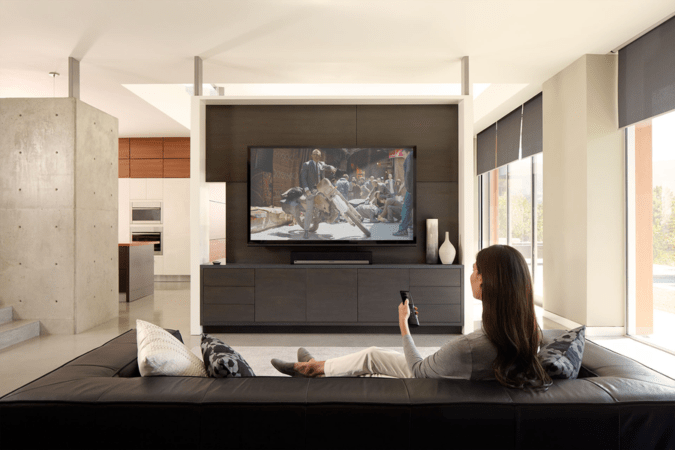Transforming your living space into a smart home theater system requires careful planning, strategic equipment selection, and meticulous installation. A well-designed smart home theater system can provide immersive audiovisual experiences and convenient control of your entertainment devices. Whether you're a movie enthusiast, a gaming aficionado, or a music lover, this guide will provide you with essential tips for creating a state-of-the-art smart home theater system through residential AV installation.
1. Assess Your Space and Requirements
Room Selection
- Choose a room that can be dedicated to your home theater, preferably with limited natural light and optimal dimensions for sound acoustics.
Purpose and Goals
- Define the primary purpose of your home theater system, whether it's for watching movies, gaming, or enjoying music.
- Determine your goals for the system, such as audiovisual quality, smart automation features, and budget considerations.

2. Design and Planning
Layout and Seating Arrangement
- Plan the layout of your home theater, considering optimal viewing angles and seating arrangements for the best cinematic experience.
- Ensure that seating positions are centered around the screen or projector for balanced sound and picture quality.
Acoustics and Sound Quality
- Assess the acoustics of the room and plan for acoustic treatments, such as sound-absorbing panels, bass traps, and diffusers, to optimize sound quality.
- Choose speaker placement locations carefully to achieve balanced sound distribution and minimize reflections.
3. Selecting Audiovisual Equipment
Display Options
- Decide between a large-screen TV or a projector and screen setup based on your space, budget, and viewing preferences.
- Choose a display with high resolution (e.g., 4K Ultra HD) and HDR support for immersive visual quality.
Audio System
- Select a high-quality surround sound system with speakers strategically positioned for optimal surround sound effects.
- Consider a Dolby Atmos or DTS:X audio setup for three-dimensional sound immersion.
Smart Automation Integration
- Choose AV equipment that integrates seamlessly with smart home automation systems, allowing for centralized control and automation of audiovisual devices.
- Opt for AV receivers or processors with built-in smart home compatibility, such as integration with voice assistants like Amazon Alexa or Google Assistant.
4. Installation and Setup
Wiring and Cable Management
- Plan for proper wiring and cable management to conceal cables and minimize clutter.
- Use high-quality cables and connectors for reliable audiovisual transmission and connectivity.

Equipment Placement
- Install AV equipment, including speakers, display/screen, AV receiver, media player, and smart home control hub, in optimal locations for functionality and aesthetics.
- Ensure proper ventilation and clearance around equipment to prevent overheating and interference.
Calibration and Configuration
- Calibrate audio and video settings using calibration tools or professional calibration services to optimize sound quality, color accuracy, and contrast levels.
- Configure smart home automation settings to control AV devices seamlessly through voice commands or mobile apps.
5. Testing and Optimization
System Testing
- Test all AV components and functionalities to ensure proper functionality and integration.
- Conduct audio and video tests to verify sound quality, picture quality, and smart automation control.
Fine-Tuning
- Make necessary adjustments to audio and video settings based on testing results and personal preferences.
- Optimize speaker placement, seating positions, and room acoustics for the best audiovisual experience.
6. Maintenance and Upkeep
Regular Maintenance
- Perform routine maintenance tasks, such as dusting, cleaning, and software updates, to ensure optimal performance and longevity of AV equipment.
- Schedule periodic inspections and maintenance checks to identify and address any issues promptly.
Upgrades and Enhancements
- Stay informed about new audiovisual technologies and trends for potential system upgrades or enhancements.
- Consider adding additional components or features, such as gaming consoles, media streaming devices, or immersive audio technologies, to enhance your home theater experience.
Conclusion
Creating a smart home theater system through residential AV installation requires careful consideration of space, equipment selection, and installation techniques. By following these tips and guidelines, you can design and install a state-of-the-art home theater that delivers immersive audiovisual experiences and seamless smart automation integration. Whether you're enjoying movie nights with family, gaming with friends, or listening to your favorite music, your smart home theater system will provide endless entertainment and enjoyment for years to come.




